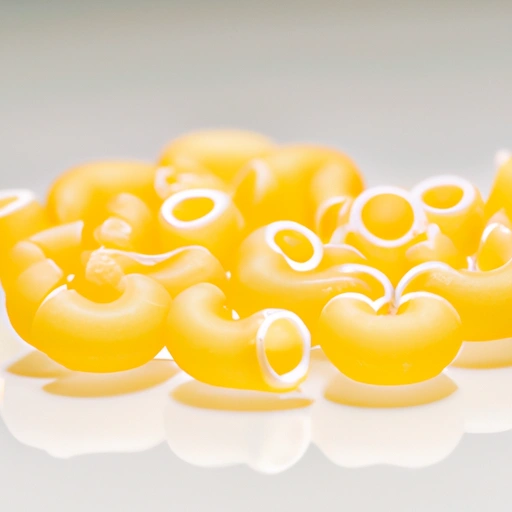Ditalini
Description

Ditalini, which means 'little thimbles' in Italian, is a small, tubular pasta that has become a staple in many culinary traditions around the world. Its diminutive size and versatile shape make it perfect for a variety of dishes, from comforting soups to vibrant salads. In recipes, ditalini is often measured in cups (American) or grams (European), with common portions ranging from 1/2 cup (approximately 56 grams) to 1 cup (approximately 113 grams), depending on the dish.
Common uses
Ditalini is commonly used in a variety of soups, including the classic Italian Minestrone and Pasta e Fagioli. It also appears in cold pasta salads, baked casseroles, and can even be used as a substitute for rice in some risotto-style dishes. Its ability to complement a wide range of ingredients makes it a favorite among home cooks and professional chefs alike.
Nutritional value
Calories
A 2-ounce (56-gram) serving of dry ditalini typically contains approximately 200 calories.
Protein
This same serving size offers about 7 grams of protein, making it a good source for maintaining muscle health and aiding in bodily functions.
Fat
Ditalini is low in fat, with a 2-ounce serving containing roughly 1 gram of fat, most of which is unsaturated.
Carbohydrates
The primary macronutrient in ditalini is carbohydrates, with a serving containing about 42 grams, providing energy for daily activities.
Vitamins
While not a significant source of vitamins, fortified ditalini may contain added B vitamins such as folic acid.
Minerals
Ditalini provides a small amount of essential minerals, including iron and magnesium, which are important for blood health and metabolic functions.
Health benefits
The carbohydrates in ditalini provide a quick source of energy, while the protein content supports muscle repair and growth. The dietary fiber present can aid in digestion and promote feelings of fullness, contributing to weight management.
Potential risks
As with any pasta, ditalini is high in carbohydrates, which can contribute to blood sugar spikes if consumed in excess. Those with gluten intolerance or celiac disease should avoid traditional ditalini made from wheat. However, gluten-free options are available on the market.
Common recipes
Ditalini is a key ingredient in Italian Minestrone soup, Pasta e Fagioli, and can be found in a variety of pasta salads, often combined with vegetables, cheeses, and light dressings.
Cooking methods
To cook ditalini, bring a pot of salted water to a boil, add the pasta, and cook for 8 to 10 minutes or until al dente. It can also be baked when incorporated into casseroles.
Pairing with other ingredients
Ditalini pairs well with legumes such as lentils and chickpeas, vegetables like spinach and tomatoes, and a variety of cheeses, particularly Parmesan and Pecorino Romano.
Summary
Ditalini is a small, tubular pasta that is both versatile and nutritious, making it a popular choice for many classic dishes. Its easy cooking process and ability to blend with a myriad of ingredients ensure that it has a place in kitchens worldwide. Whether you're whipping up a quick side or a main course, ditalini is a delightful addition to any meal.